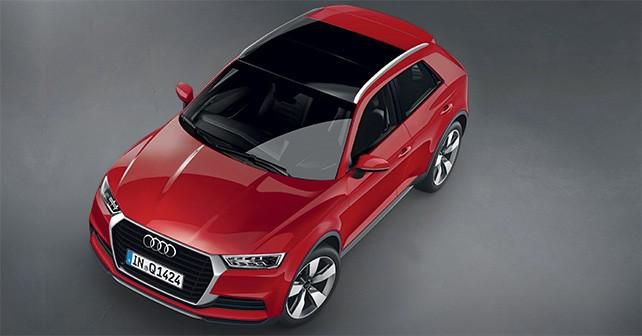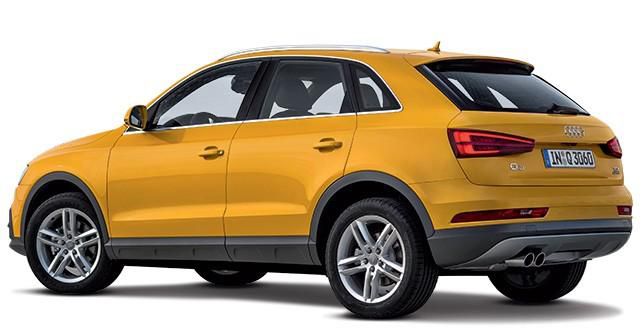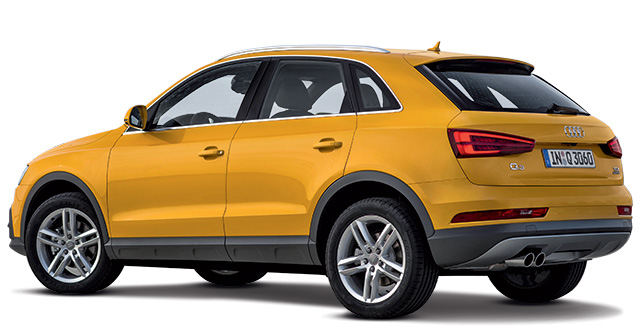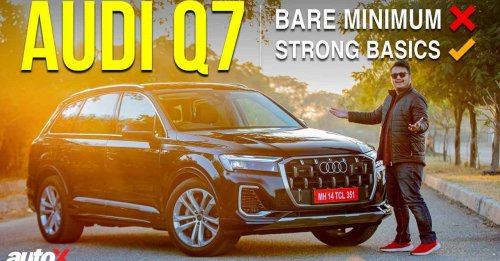Audi’s compact SUV, the Q1, is awaited with great anticipation. Here’s a look at what to expect when it hits showrooms next year.
For a few years now, Audi had been contemplating an ultra-compact SUV – a machine around four metres in length, which would be useful in the city as well as for short trips outside urban areas. Practical, multi-purpose, and liveable!
But the conception of the Q1 hasn’t been easy. Audi’s tried its hand in the super-mini segment in the past, with the A2 – a small and misunderstood ‘genius,’ a forerunner of its times, an alien in the range, and also in the automotive landscape of the late 20th century. The A2 was prematurely pushed out, because of its Bauhaus-style – which wasn’t particularly easy to digest. Another reason was its high price, not in absolute terms but in relation to its size – especially at a time when the concept of ‘premium’ was unheard of in small cars.
The void that it left when it came to the end of its life in 2005 has been the subject of much discussion ever since – it’s even given birth to several newer concept cars in the interim. The question on how to fill that gap successfully, though, has thus far remained unanswered. The A1 of 2010 was a partial answer – a sporty hatchback – that stood out from the crowd in the busy city streets of Europe.
But the A1 couldn’t meet the needs of those who missed the practical side of the A2. The idea of the MPV was not dead, but Audi didn’t quite seem interested. So, they’ve come up with a new kind of car – the compact sport utility vehicle. Potentially, it could turn into a gold mine for Audi.
So, from the first half of 2016, the Q1 will woo a particular segment of customers. Audi wanted to call it the Q2, but Fiat-Chrysler had already registered the Q2 name for Alfa Romeo’s electronic differential.
A PLUG-IN FUTURE?
The Q1 will be about 4.2 metres in length, and will be available in both two-wheel and all-wheel drive versions. Built on the MQB platform, on which the A3 is also made, the Q1 will initially feature only four-cylinder engines in both petrol and diesel – with a power output in the range of 140 to 200bhp. However, there is the possibility of Audi slotting in the three-cylinder petrol engine from the Volkswagen Up – suitably tuned of course.
It’s almost certain that the Q1 will be offered as a hybrid plug-in ‘e-tron’ version at some point down the road. On this subject, Audi’s top management was very clear – from now on, every new Audi model to be launched will have a model with a plug-in hybrid powertrain.
As far as style goes, the Q1 is a transitional model – which is influenced by Wolfgang Egger, head of design until 2013, and his successor Marc Lichte. As for the interior, we expect a minimalist and clean style, but also versatile enough to meet the needs of the ‘metropolitan adventurers’ who will buy it. And, of course, multimedia and connectivity will be state-of-the-art.

The design language of the Q1 is very much in the Audi style, but there still are some original elements. The rear lights, for instance, are quadrangular – as opposed to the elongated shape that we’ve come to expect from Audi.
Q RANGE TODAYFrom 4.4 to 5 metres-plus The Q1 will expand Audi’s range of sport utility vehicles. While the Q1 measures just over four metres in length, the Q9 will be a massive luxury SUV with a length of over 5 metres.
A2 concept (2011)
A2 (1999)Made of aluminium, with a fuel efficiency of over 30km/l
The 1999 Audi A2 was a sophisticated city car with a shortened ‘minivan’ style. But it appears that small MPVs are now close to extinction – while the public’s appetite for SUVs seems inexhaustible.
© Riproduzione riservata




































Write your Comment